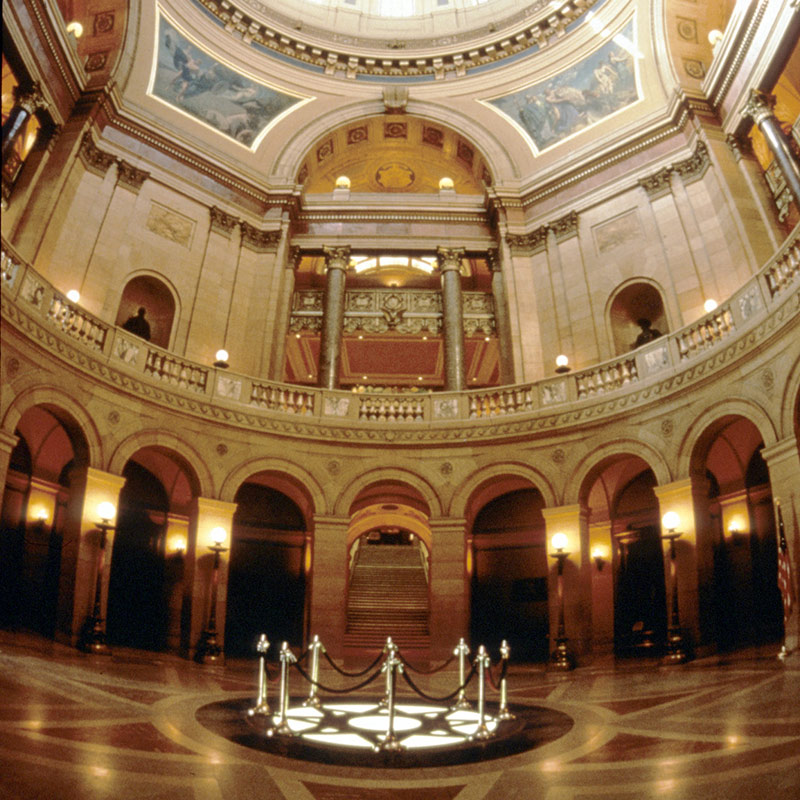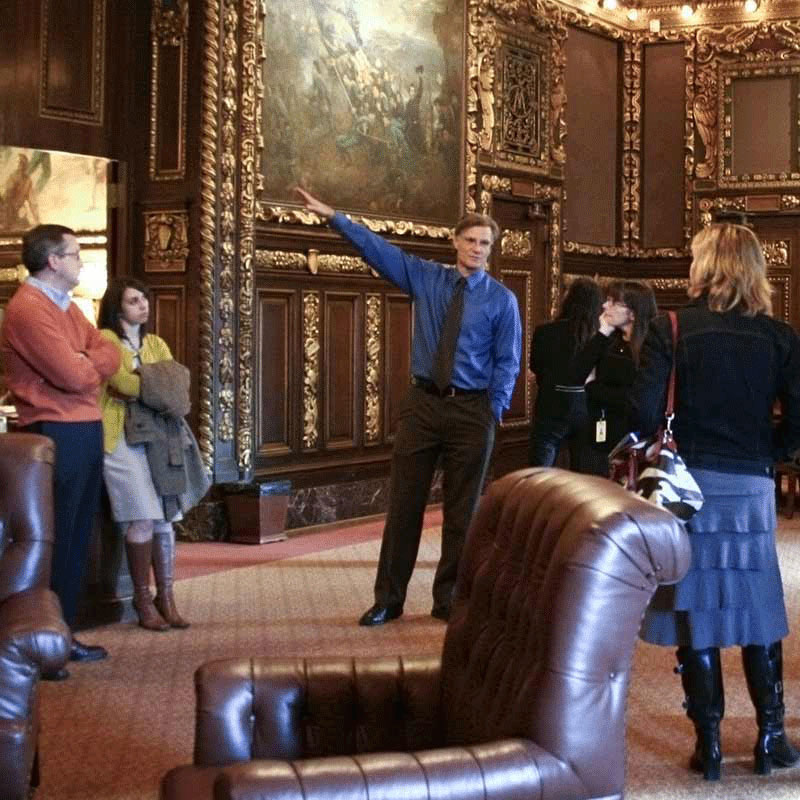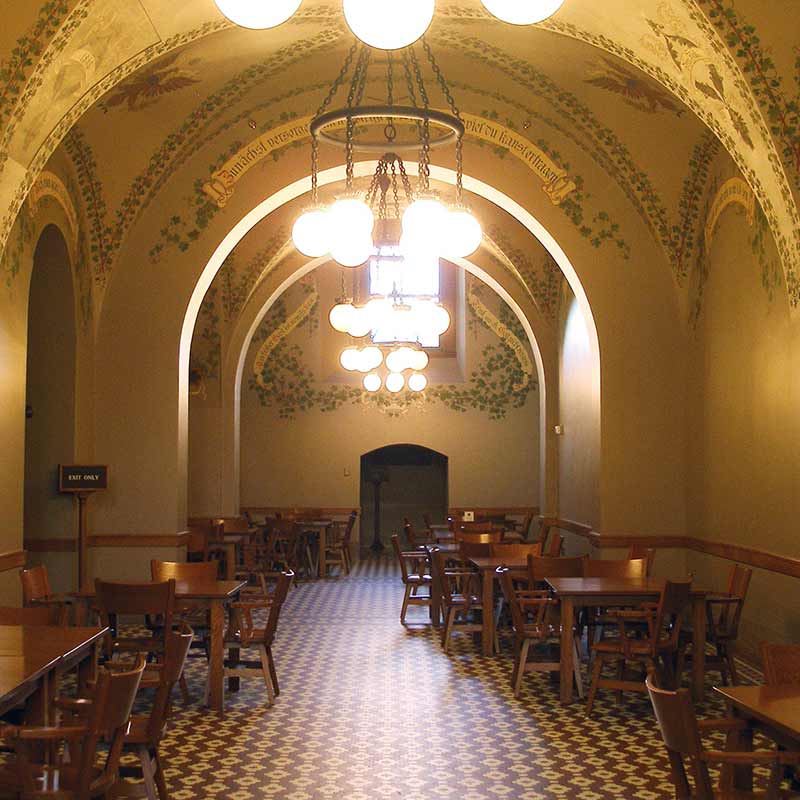Suggested Itinerary
Not sure where to start? Here are the most popular spots. Choose a few or visit them all.

Rotunda
First floor
The rotunda — the large, round area in the center of the building — extends from the first floor to the inner dome. In the center is a large marble star, which is also repeated in brass and glass and serves as a symbol of the state motto, "The North Star State." Against the walls are glass cases displaying, on a rotation, battle flags that were carried by Minnesota soldiers in the Civil War and Spanish-American Wars. The allegorical story Civilization of the Northwest by Edward Simmons is told in four large murals above the third floor. High overhead, hanging from the middle of the dome, is a crystal chandelier six feet in diameter, lit by 92 light bulbs.

Governor's Reception Room
First floor
This room is ornately decorated with white oak woodwork and plaster of Paris symbols of Minnesota overlaid with gold-tinted metal leaf. In the center of the room is an original hand-carved mahogany table designed by Cass Gilbert. It is placed amid other historic furniture. Paintings of scenes from Minnesota's involvement in the Civil War adorn the walls. In 1984, this was the first room in the capitol to be restored to its original appearance. During the 2013-2017 restoration, a reproduction of the original carpet was installed to complement the original furniture and artwork. As a functioning workspace for meetings and press conferences throughout the year, its availability may be limited day-to-day.

Second floor
This is the "grand floor" of the capitol. Here are the chambers of the Senate, the House of Representatives and the Supreme Court. The Senate and House meet in regular session each biennium for a total not exceeding 120 legislative days. Each space, unless in session, can be viewed at the chamber entrance. There you can see the layout of each room, the carpet, furnishings, and restored decorative and fine art.

Senate Chamber
Second floor
Sixty-seven senators are elected for four-year terms. The President of the Senate is elected by the Senate members and presides over the body when in session. The Senate officers and the President of the Senate sit at the front of the chamber. Two electronic voting boards record senators’ votes. On the side walls are murals by Edwin Blashfield that represent the importance of agriculture, patriotism, and the Mississippi River in the state’s history. Above the dais is a public viewing area that can be accessed during legislative session from the third floor.

House of Representatives Chamber
Second floor
This chamber, the largest in the building, is used not only for regular House sessions, but also for joint sessions of the legislature. The 134 representatives are elected for two years. The Speaker of the House sits at the topmost desk. The ceiling, one example of many decorative areas in the capitol, was designed by Elmer E. Garnsey, the director of decorations during the original construction. The four names on the ceiling — LaSalle, Hennepin, Perrot and Duluth — honor early French explorers in the Northwest. Public galleries, which may be entered from the third floor, face the sculpture group in the front titled Minnesota: The Spirit of Government, a 1938 addition designed by Carlos Brioschi.

Supreme Court
Second floor
In this highest court in the State of Minnesota, oral arguments are heard by the chief justice and six associate justices in this chamber. Facing the justices are benches for visitors who come to hear the court sessions. Four large murals by John LaFarge symbolize concepts of the legal system from different time periods and cultures.

Rathskeller cafeteria
Basement
Gilbert and Garnsey created this space to resemble a German dining hall. Restored in 1999 with its original German mottoes, small animals and floral designs, it recaptures the historic setting of 1905. It is open for public dining during the legislative session.

